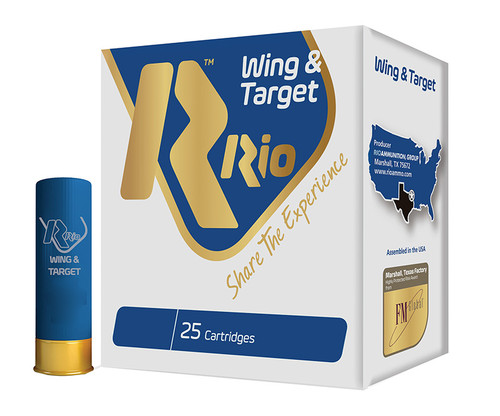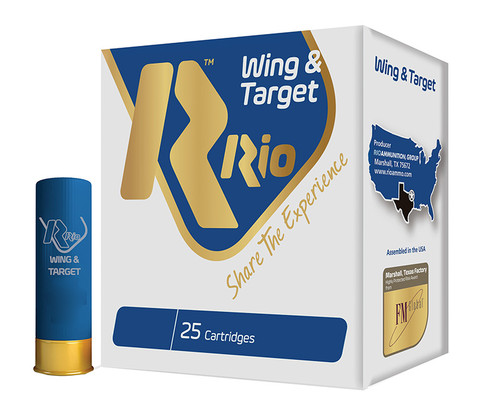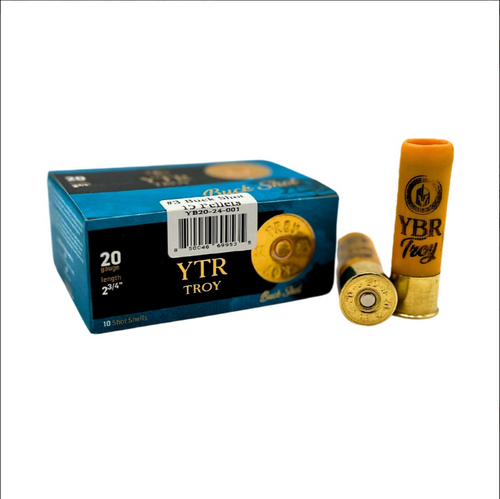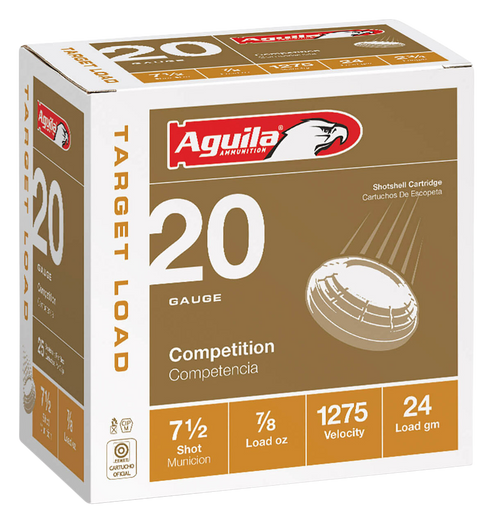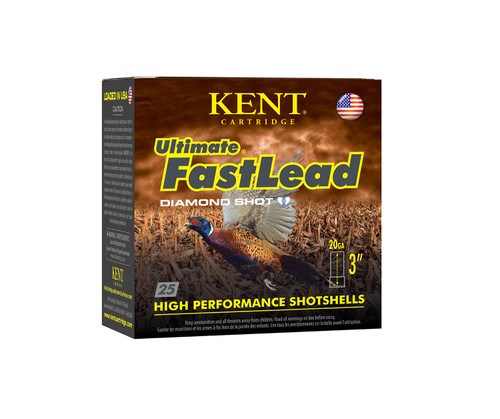20 Gauge Shells

20-ga. Shotgun: In Depth
The concept of “gauge” goes a long way back in firearms history: back to when gunners would stuff just about anything down a barrel, light a charge behind it, and hope for the best. So, to ensure that they actually had repeat customers – rather than risk blowing them all up – ammunition makers needed to agree on a standard for projectile sizes. The standard they settled on for shotguns was called a “gauge”. In this context, gauge refers to how many lead balls equal in diameter to the barrel’s bore it takes to make one pound: so 10-gauge lead balls are larger than 12-gauge, which are larger than 16-gauge, and so on. Brits typically use “bore” – as in 10-bore, 12-bore, 16-bore, etc. – but this term is far less common in the US nowadays, even though it sounds cooler.
Just as there are countless rifle cartridges in dozens of different calibers, there are thousands of shotgun loads across the various gauges; each with a distinct purpose. Generally, as logic would dictate, bigger gauges are used to hunt bigger critters, though the situation isn’t as straightforward these days. However, back when 20-gauge shotgun smokeless powder loads were first hitting the scene, this rule was basically iron-clad. Before the late 1890s, when 2 ¾”-in shells became more common, shorter shells (like 2 ½”) were often used for 20-ga. Still, even with longer, more powerful 2 ¾” shells, the 20-ga. was largely pigeon-holed into hunting smaller birds, whereas 12-ga. and larger guns handled waterfowl and even deer hunting duties. Uses for each size of shotgun would stay divided along these lines until 20-ga. 3” magnum shells started gaining popularity in the middle of the 50s. After that, the role of the 20-ga. would expand into areas previously reserved for the 16-ga. and even the 12-ga. shotgun.
In the early 60s, shotgun shells went plastic, and 20-ga. finally received its distinctive yellow shell. Those two changes get us about halfway to modern ammo – the ban on lead shot for waterfowl hunting thirty years later was responsible for the rest. The nation suffered through the steel era (steel was the original replacement for lead), which was especially impactful for 20-ga. ammo, since steel shot generally needs to be larger than lead shot to have the same performance (it’s lighter than lead). As a result, fewer steel shot pieces could fit into each shell. However, with alternative metals like bismuth and tungsten / alloys used for shot in recent years, this performance gap has once again closed.
Modern shotgun ammo has all but broken the boundaries between neighboring gauges. That being said, 20-ga. for most folks still occupies the small-bird hunting and sport shooting territories that it did in the past. The only difference: the loads are a lot better now.
20-ga. Shotguns
New shotguns in 20-ga. can be found with four main action types – pump, semi-auto, bolt, and break-action – in both 2 ¾” and 3” magnum chamberings, with 3” chambers most common in everyday / all-round guns. Prices range from a few hundred dollars for single shots and pumps up to many thousands for the most ornate over-unders and other boutique break-actions. There is also a huge used market for 20-ga. guns; they’ve been around a long time! Bargain-basement prices can be found on 20-ga. shotguns in pawn shops across the US, if you’re willing to go that route.
Pump-Action
- Remington 870
- Winchester SXP
- Mossberg 500
- Stevens 320
- Benelli Nova
Semi-Auto
- Beretta A300
- Winchester SX4
- Mossberg SA-20
- Benelli M2
Break-Action / Over-Under / Side-by-Side
- Stevens 301
- Henry Single Shot
- Browning Citori
- Beretta 686
- Stoeger Coach Gun
- CZ-USA Sharp Tail
Bolt-Action
- Savage 220
Chokes
- Sporting shotguns are capable of fitting special devices that constrict the spread of shot – called chokes or choke tubes. These can be useful for some targets at longer distances. Check out this article on choke tubes for a quick run-down.
- Three of the most popular styles of choke are called: improved cylinder, modified, and full.
- Straight walled barrels with no provision for a choke are called cylinder bores.
Why Choose a 20-ga. Shotgun?
These days, reaching for a 20-ga. shotgun instead of a 12-ga. means you want to do shotgun stuff but you don’t want the weight or recoil of a 12-ga. Shotguns in general are great for hunting many species of birds and small to medium sized game. The 20-ga. is no different, and is capable of many of the same tasks as the 12-ga., as long as you choose the proper load. 3” magnum loads have closed the gap with 12-ga quite a bit. The biggest advantages, as mentioned earlier, are that 20-ga. shotguns are lighter and recoil less than 12-ga. guns, so they are great for introducing younger or smaller-statured shooters to hunting or target shooting.
Hunting
- Does most of what a 12-ga. shotgun can do – from hunting varmints to upland game, and even deer.
- Reach for a slug load for hunting medium sized game like deer when using a 20-ga.
Sport Shooting
- Lighter guns and less recoil make 20-ga. a good introduction to the shooting sports for younger or smaller shooters (though maybe not as good as .22LR).
- Wide variety of sport-clay loads. In most cases, it’s also a whole lot easier to swing, point, and shoot a 20-ga. all day vs. a 12-ga.
20-ga. Shotgun: Ammo Brands and Loadings
Compared with the dizzying variety of 12-ga. ammo out there, 20-ga. offerings are more tightly focused on hunting upland game and some waterfowl, as well as specialty target shooting. Most of the same shot types / projectiles are available, including slugs, and also lead / alternative shot materials. Like 12-ga. ammo, intended purpose is usually listed on the box.
Brands
Shot / Projectile Types
- Shot - Small metallic balls. Typically used for hunting waterfowl, upland game, and deer (buckshot). Also used for clay targets.
- Slugs - Metallic cylinder used for larger game or self defense.
- Less Lethal - Rubber/polymer projectiles. Not as common in 20-ga. as they are in 12-ga.
Shot / Projectile Weights
- Shot
- The higher the number, the smaller the shot, starting with lead #12 (smallest) to BB (largest), and steel #6 (smallest) to F (largest).
- Buckshot is larger than the numbered shots, and runs No.4 (smallest) to #000 (largest).
- For 20-ga, shot weight ranges from ⅞-oz to 1 ⅝-oz.
- Slugs - For 20-ga., slug weights range from ⅝-oz to 1-oz.
Shot Material
- Lead - Traditional shot material with optimal flight characteristics. Illegal to hunt with in some jurisdictions and for some species.
- Steel - Harder and lighter than lead, may damage some older barrels, flight characteristics not as good as lead.
- Bismuth - Softer than steel, closer to lead, can be expensive.
- Tungsten - Heavier than lead and extremely hard, also quite pricey.
Shell Length
- 2 ¾” - Most common. Suitable for most bird hunting and target loads.
- 3” - More room for shot; more power for larger game.
- 1 ¾” (Mini / Shorty) - Short, minimal recoil loads mostly for plinking, and now available from Aguila in 20-ga. They are unlikely to feed reliably in most repeaters due to their small size.
Velocities
- Shot - 1,100/fps to 1,400/fps
- Slugs - 1,300/fps to 1,800/fps
20-ga. Shotgun: Frequently Asked Questions
Yes. 20-ga. shells are shorter and smaller in diameter than 12-ga. shells. 20-ga. shotguns, since they are lighter and recoil less, also make good training guns for smaller or younger shooters.
A 20-ga. shotgun with a buckshot or slug load can be a good option for home defense. Stay away from birdshot for home defense.


